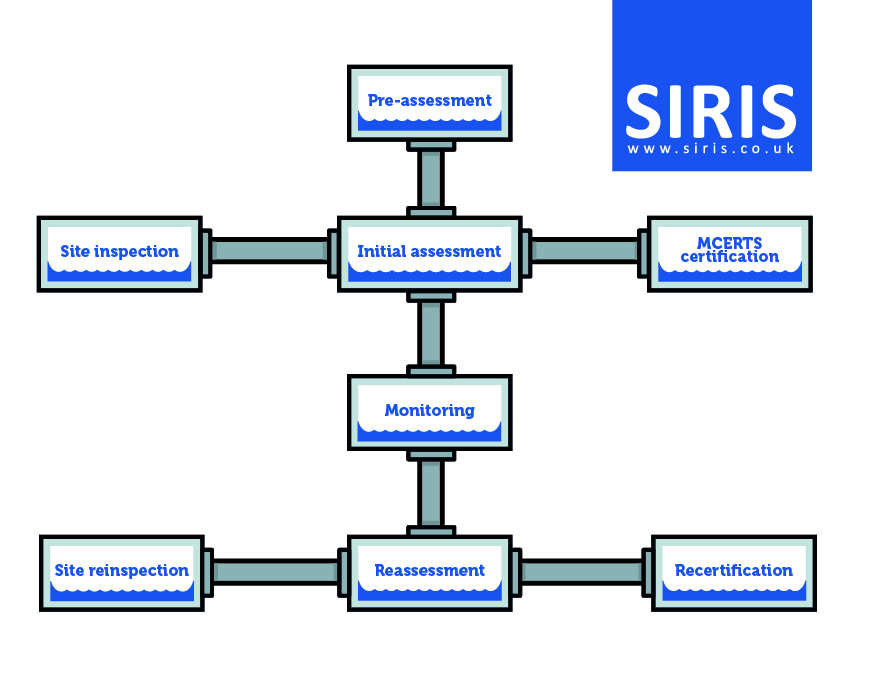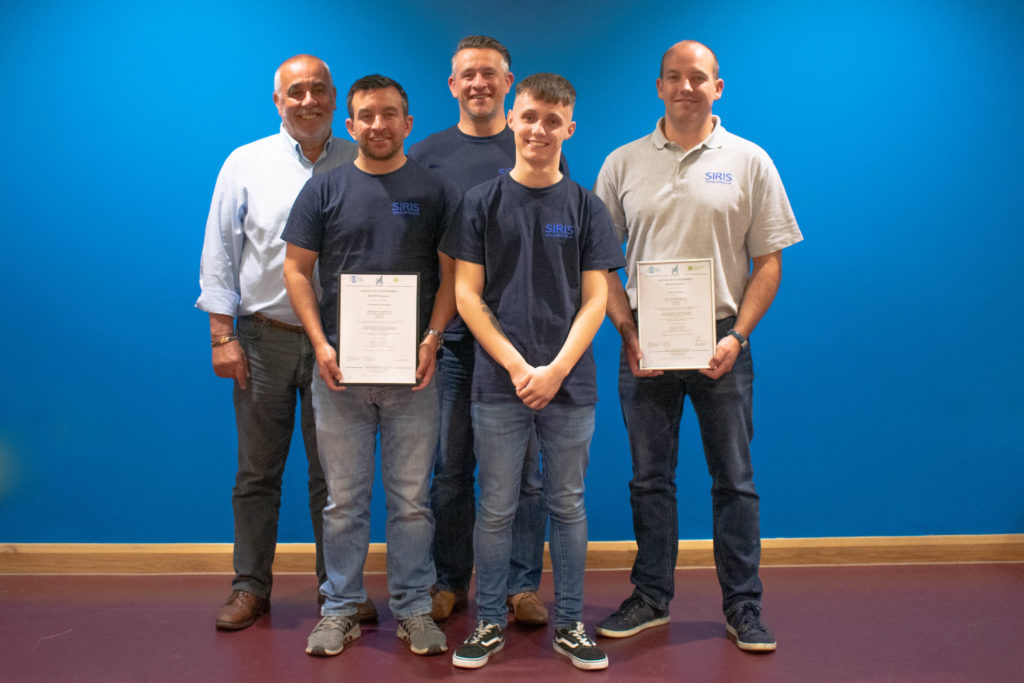Preparing for your MCERTS inspection might seem daunting – even if you’re used to the process. In this guide, we’ll be explaining the steps you need to take to get your site ready for a successful MCERTS inspection.
What are the steps to obtaining MCERTS compliance?
The first step to achieving MCERTS compliance is obtaining a consent to discharge permit. This is a legal requirement for most businesses discharging trade effluent to a public waterway or sewage system – although there are some exceptions.
You can learn more about obtaining a consent to discharge permit here.
There are then three stages to getting certified:
1. Inspection: A certified MCERTS inspector will visit your site to inspect your flow measurement system. Provided the installation meets the standards, the inspector will issue a conformance report.
2. Audit: An independant auditor will inspect your QMS (Quality Management System) to make sure it meets performance requirements. If it does, you will be issued with a conformance report.
3. Certification: Provided you have passed the inspection and audit, you will be issued with an MCERTS certificate. Certification is valid for five years after which the installation is re-inspected. The QMS is subject to periodic surveillance audits during the five-year period.

You can view the status of your MCERTS certification through the CSA Group’s Certificate Database, which shows whether a certificate is still current or has been withdrawn or suspended.
Getting ready for your MCERTS inspection
The following steps are our recommendations for preparing for your MCERTS inspection. Whether it’s your first inspection or a re-inspection, it’s a good idea to go through these steps to give your site the best chance of a positive outcome.
1.Familiarise yourself with the latest MCERTS compliance guidance. It’s a good idea to get up-to-date with the Environment Agency’s latest MCERTS performance standards and conduct an internal audit to highlight any areas of concern ahead of the inspection.
2. Make sure the inspector will be able to access the site. Please ensure any necessary paperwork to allow our team access has been completed ahead our visit and let us know about any training or ID requirements, as well as any site-specific risks.
3. Ensure there will be a qualified team member on site. It’s a good idea to make sure that whoever is on site to welcome the inspector has a good working knowledge of the system and is able to answer any questions.
4. Get your paperwork ready. The inspector will need to see a copy of your Consent to Discharge and/or permit, along with maintenance and calibration records.
5. Collate any representative flow data you have to hand, or make Cloud data available to the inspector. The inspector will typically need to see a 15 minute spot average and daily volumes. This will help them understand the site’s discharge pattern and any variations in flow rate and will be useful if there are unusual flow levels on the day of inspection.
6. Check your maintenance programme. Poorly maintained equipment can cause flow meters to give incorrect readings. Your flow system should be in good condition and well maintained and we will need to check maintenance records to asses how effective your maintenance programme is.
7. Make sure the flow meter display unit is accessible. The inspector will need to see the make/model, connect a laptop to download the data, and possibly interrogate settings to ensure correct set-up.
8. Check the location of the flow meter. Our inspector will need to carry out detailed checks, a flow test. Please make us aware in plenty of time if there are any specialist requirements such as confined space entry. Remember, we may need to access the flow channel and/or isolate the flow.
You can download a printable copy of these steps here.
How Cloud data can help
Our remote data monitoring system makes it much simpler to prepare for your MCERTS inspection. Using our specialist specialist remote telemetry unit and data visualisation software, our inspectors can quickly access real-time data from your monitoring system. With 24/7 remote access to your data, investing in a data monitoring component for your flow measurement system saves time and money. What’s more, you can focus on getting ready for inspection without panicking about paperwork!
Find out more about how data monitoring can help your business.
Get in touch to talk about your MCERTS inspection

At SIRIS, our team of MCERTS experts are always on hand to offer support and guidance.
Get in touch to find out more about MCERTS or preparing your site ready for inspection.